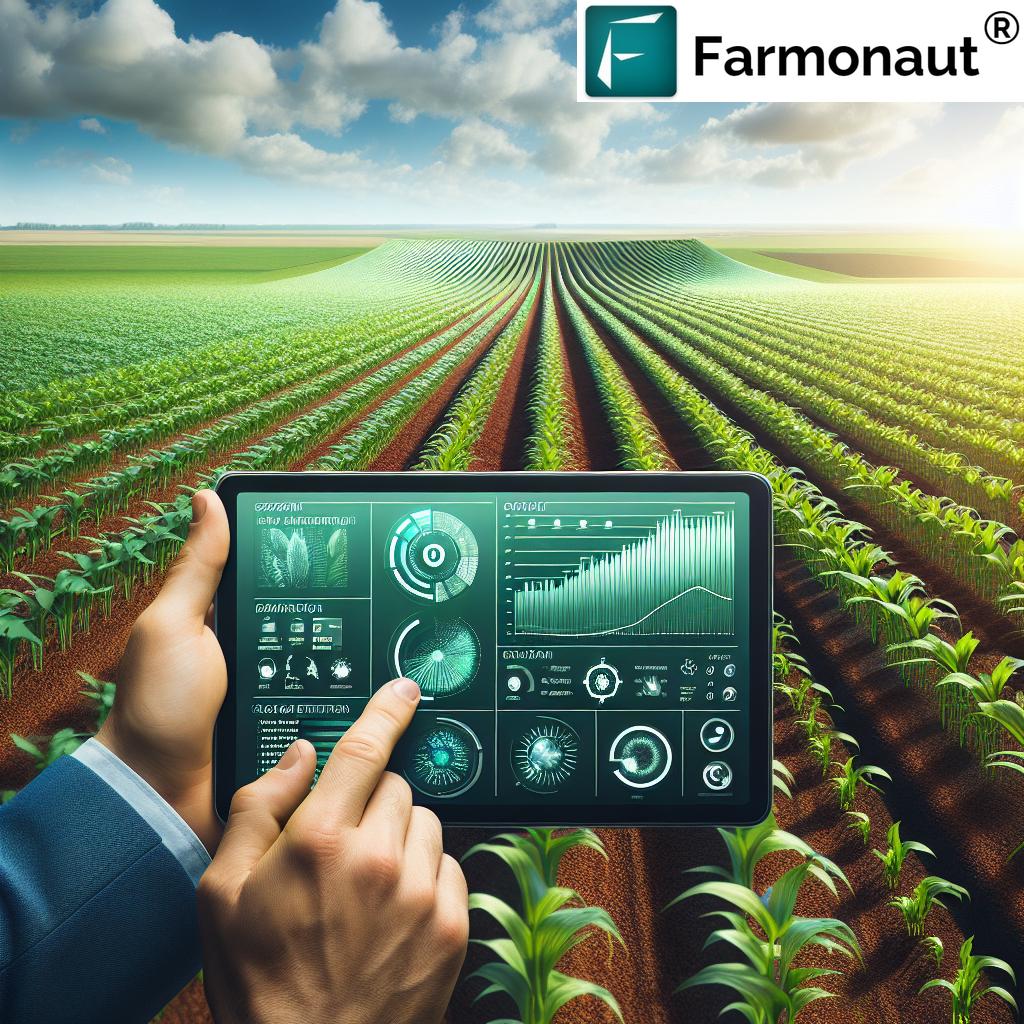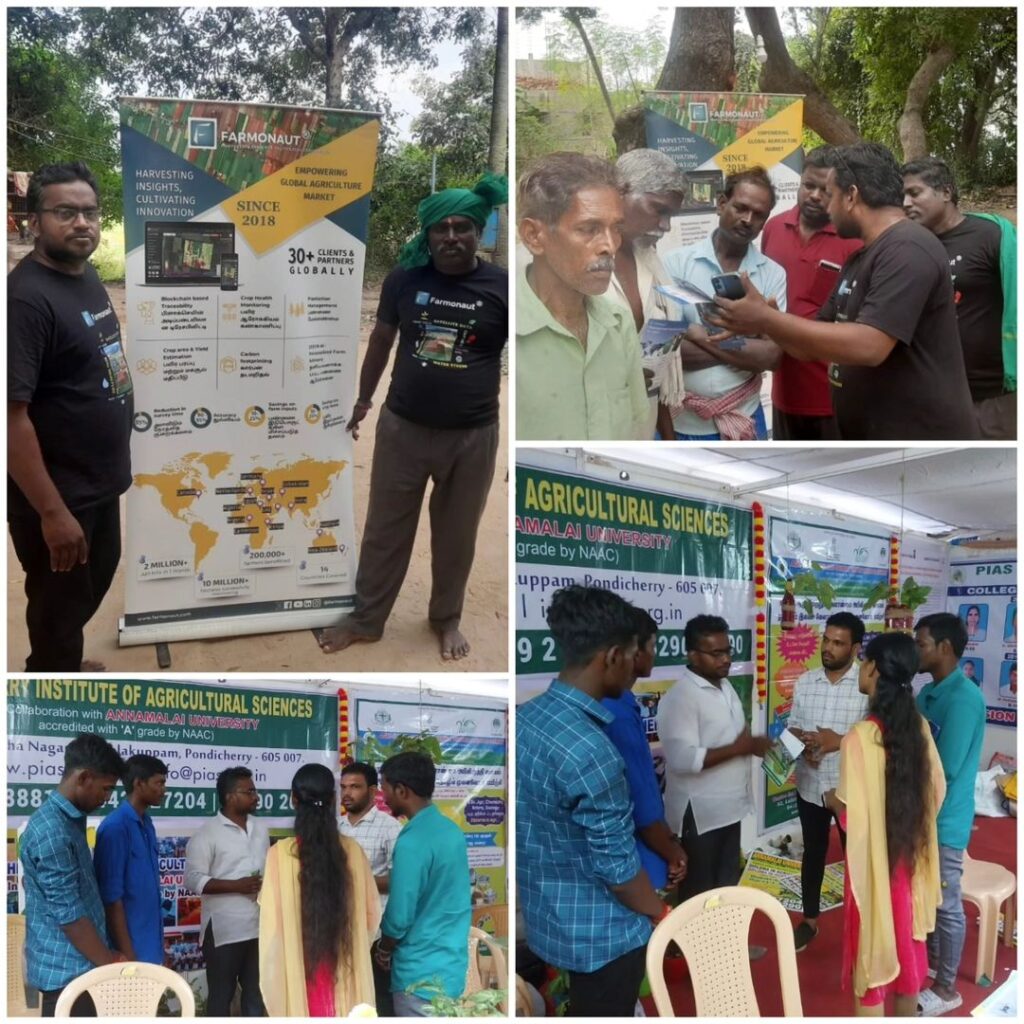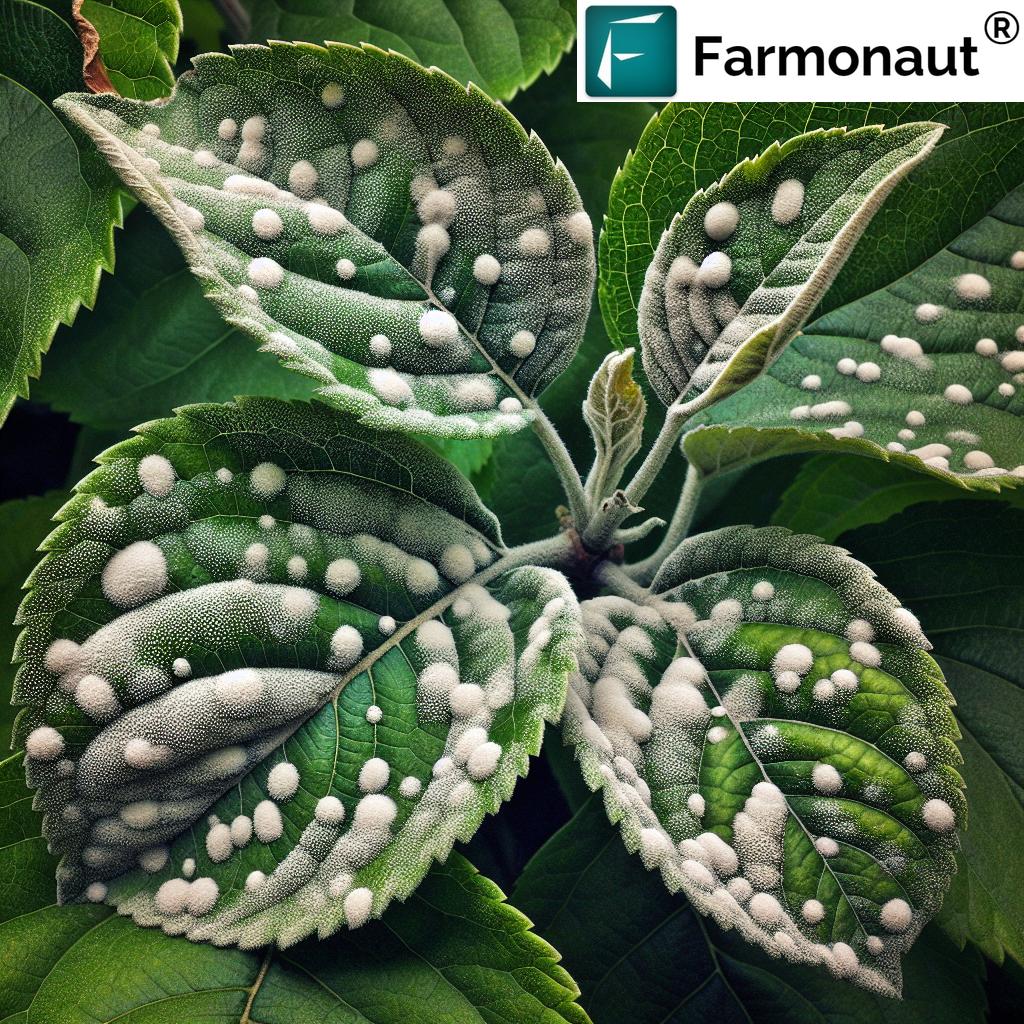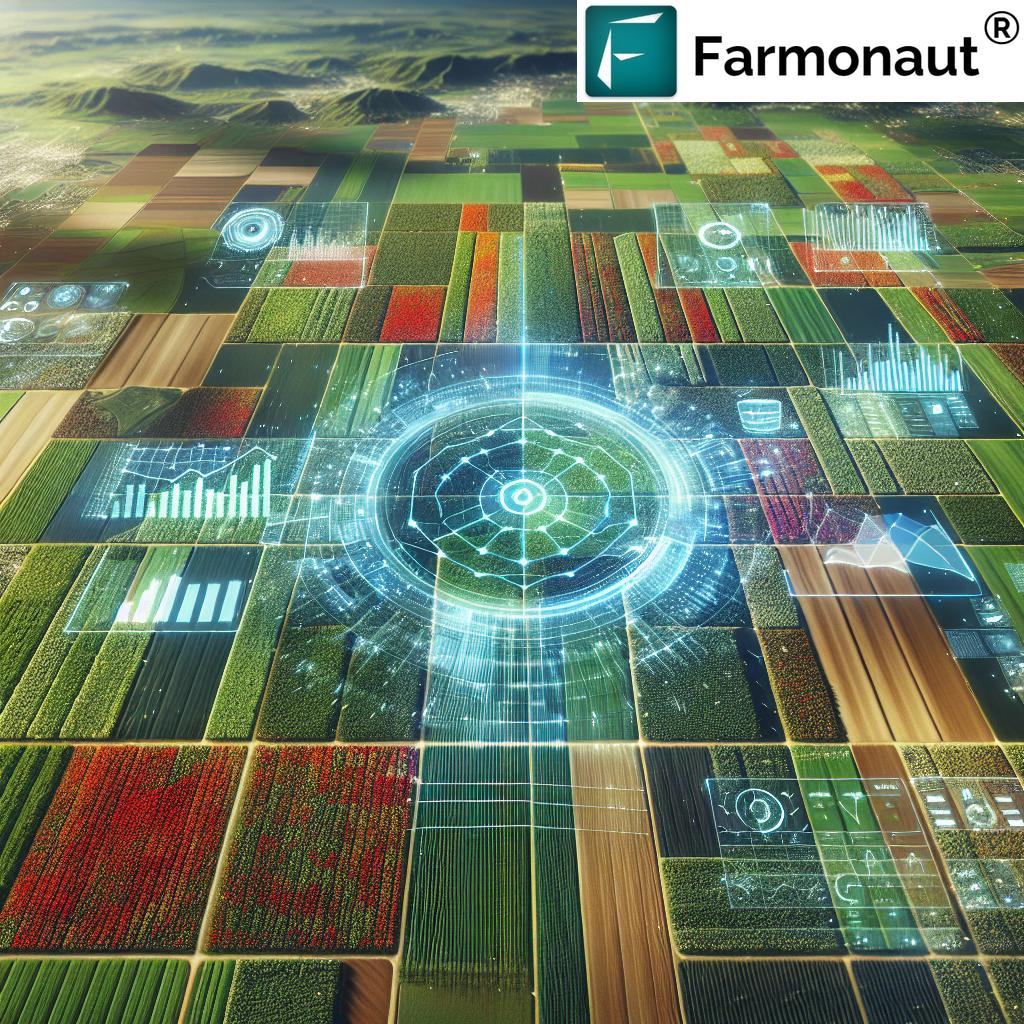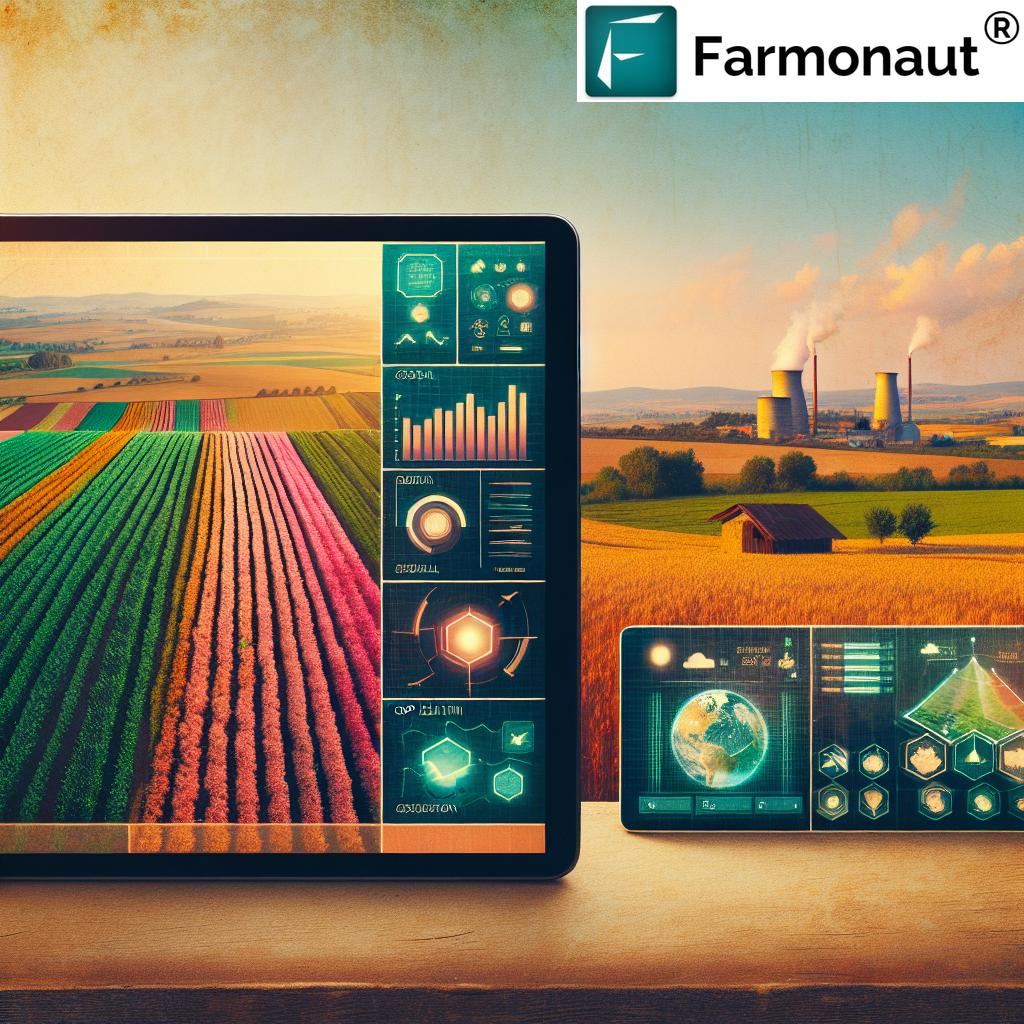Field Scouting: 7 Powerful Techniques to Boost Crop Health
“Over 80% of crop diseases can be detected early with advanced field scouting techniques.”
Introduction: Unleashing the Power of Field Scouting
In today’s dynamic world of agriculture and forestry, field scouting stands as the foundation for robust crop health monitoring and sustainable farming practices. By systematically examining fields for pests, diseases, soil condition assessment, and overall plant growth, we empower ourselves to make proactive decisions and interventions that ensure higher yields and better resource management.
With the rapid adoption of precision agriculture technology, the landscape of scouting and monitoring in farming has undergone a significant transformation. From drone field scouting to satellite crop monitoring, these innovations offer unprecedented accuracy, comprehensive coverage, and timely data-driven solutions for all types of crops—be it in large agricultural enterprises or small family farms.
The Importance of Field Scouting in Crop Health Monitoring
Field scouting is more than just a routine survey—it’s a systematic examination that enables us to monitor and identify potential issues in crops at their earliest stages. The benefits of consistent scouting touch every aspect of the farming cycle, directly influencing productivity, profitability, and sustainability.
- Early Detection of Pests and Diseases: Systematic scouting leads to rapid identifying and detection of pest infestations or plant diseases before they cause significant damage.
- Assessment of Crop Health: Ongoing evaluation of plant vigor helps us optimize irrigation, fertilization, and other cultural practices tailored to specific crop development stages.
- Weed Detection and Control: Timely weed management reduces competition for resources and ensures healthy growth.
- Soil Condition Evaluation: Observing soil health guides the use of amendments, tillage methods, and overall resource allocation for crop optimization.
- Data Documentation and Trend Tracking: Maintaining accurate records supports management decisions and helps spot emerging trends requiring immediate or preventive measures.
Through the integration of advanced technologies, the effectiveness of field scouting grows exponentially—turning raw observations into actionable insights for precise interventions, ultimately improving yields and long-term farm health.
7 Powerful Field Scouting Techniques for Crop Health Monitoring
To consistently ensure optimal crop health, our approach involves the use of seven meticulously designed techniques supported by modern tools and data-driven practices. These field scouting techniques leverage the latest in agricultural technology to achieve comprehensive assessment, timely identification of problems, and optimization of resources.
-
Systematic Sampling Patterns
Why It Matters: Proper sampling is the first step in effective field scouting. By following structured patterns like zigzag, “W”, diagonal, or grid, we ensure no corner of our fields is overlooked.
- Use Case: For instance, walking in a broad W across the field allows both edge and center coverage—improving reliability of data.
- Benefits: Enhances coverage, supports better pest and disease identification, and improves resource allocation.
Reference: sare.org – Crop Scouting Basics
-
Regular and Strategic Monitoring
Why It Matters: Monitoring fields on a scheduled basis—ideally weekly, and daily during periods of high pest pressure or rapid plant development—is essential for early detection and prevention of crop health issues.
- Growing Season Monitoring: Frequent inspections catch diseases, pest outbreaks, or nutrient deficiencies before they escalate.
- Benefits: Timely interventions, reduced damage, improved overall crop health monitoring.
Reference: alberta.ca – Field Scouting Guide
-
Detailed Record-Keeping and Data Tracking
Why It Matters: Documenting every observation—from pest counts and damage severity to plant vigor and soil conditions—forms the baseline for in-depth trend tracking and informed future decisions.
- Best Practice: Use mobile applications or scouting forms to log data during every field visit, including GPS coordinates for precision.
- Benefits: Clear reporting, supports integrated pest management (IPM), facilitates collaboration with foresters and agronomists.
-
Technology-Enabled Assessments
Why It Matters: Precision agriculture technology—including smartphones, GPS devices, and data tools—enhance accuracy, efficiency, and allow easy sharing and analysis of scouting data.
- Application: For instance, mobile applications can automatically record time, date, and location for each scouting event.
- Benefits: Reduces human error, speeds up data analysis, and enables rapid response to issues.
See: FarmQA Scouting App for customizable scouting forms.
-
Drone Field Scouting
Why It Matters: Drones equipped with multispectral sensors allow rapid collection of large-scale images for crop health and stress evaluation, delivering a bird’s-eye view to pinpoint problems invisible from the ground.
- Application: Drone scouting can quickly detect pest infestations, waterlogging, or nutrient deficiencies over large fields.
- Benefits: Rapid, comprehensive coverage, increased detection accuracy, and quick identification of urgent interventions.
Reference: Drone Scouting Insights
-
Satellite Crop Monitoring
Why It Matters: Satellite-based crop health monitoring—like that offered by Farmonaut—enables us to routinely assess field conditions, vegetation health, soil moisture, and stress factors at both macro and micro scales.
- Use Case: Regular analysis of NDVI and other vegetation indices augments manual scouting and supports precision interventions.
- Benefits: Large-scale monitoring, trend analysis, cost-effective for individual farmers and large enterprises alike.
Reference: Farmonaut Satellite Solutions
-
Collaborative and Expert-Driven Evaluation
Why It Matters: Engaging with foresters, extension officers, or crop experts brings a wealth of specialized knowledge into the scouting process, improving identification accuracy and fostering continuous skill development among scouts.
- Application: Team reviews or cooperative programs improve detection of less-common diseases or rare pest outbreaks.
- Benefits: Professional insight, effective integrated pest management, improved risk assessments.
Comparative Techniques Overview Table
For clarity and quick reference, we’ve compiled the seven most impactful field scouting techniques into a user-friendly table. This overview allows us to easily compare technologies, purposes, core benefits, estimated effectiveness, and how often they should be applied.
| Technique Name | Technology/Tool Used | Purpose | Key Benefits | Estimated Effectiveness (%) | Recommended Application Frequency |
|---|---|---|---|---|---|
| Systematic Sampling Patterns | Manual Scouting, GPS Devices | Ensure all field areas are checked | Comprehensive coverage, reduces missed pest/disease hotspots | 90% | Weekly (more during outbreaks) |
| Regular Monitoring | Manual, Mobile App, Field Journals | Track crop health continuously | Early problem detection, trend analysis | 95% | Weekly (daily in high risk) |
| Detailed Record-Keeping | Mobile Apps, Templates, Cloud | Document observations and interventions | Supports IPM, tracks trends, evidence for managers | 92% | Every scouting event |
| Technology-Enabled Assessments | GPS, Mobile Apps, Sensors | Enhance data accuracy/efficiency | Efficient, precise, data integration | 95% | Ongoing |
| Drone Field Scouting | Drones w/ Multispectral Cameras | Rapid area and condition assessment | Large-scale, high-res data, time-saving | 98% | As needed (1–2 times/month during growth) |
| Satellite Crop Monitoring | Satellite Imagery, AI Platforms | Routine field & soil assessment | Wide coverage, time saving, trend analysis | 97% | Every 3-7 days or per satellite revisit interval |
| Collaborative Evaluation | Expert Review, Advisory Committees | Professional validation & strategic planning | Expert insights, less error, robust responses | 94% | Monthly or as needed for major concerns |
“Precision field scouting can reduce pest-related crop losses by up to 30% annually.”
Common Issues Identified During Field Scouting
Every scouting event enhances our ability to rapidly detect and address a wide range of threats. Effective field scouting helps us identify:
- Pests: Insects, rodents, and other animals that damage crops—including caterpillars, locusts, beetles, and grasshoppers.
- Diseases: Fungal (e.g., powdery mildew), bacterial (blight), and viral infections compromising plant health.
- Weeds: Unwanted plants that are competing with crops for water, sunlight, and nutrients.
- Nutrient Deficiencies: Symptoms like chlorosis, necrosis, or irregular growth patterns signifying insufficient soil nutrients.
- Environmental Stress: Drought, excess moisture, heat/cold extremes, and compaction affecting development and yields.
Thorough soil condition assessment also supports decisions on large scale farm management and guide carbon footprinting strategies for environmental sustainability.
Leveraging Precision Agriculture Technology in Field Scouting
The adoption and integration of precision agriculture technology have taken field scouting to new heights. Let’s examine how these contemporary tools transform every step:
- GPS Devices: Improve navigation and support systematic sampling patterns for even field coverage.
-
Mobile Applications: Like Farmonaut’s multi-platform apps, allow us to document scouting data, track pest counts, upload photos, and directly communicate with experts, enhancing efficiency and accuracy.
Try Farmonaut’s Mobile Apps for Real-Time Scouting & Crop Health Alerts -
Satellite Imagery: Platforms such as Farmonaut process high-resolution, multispectral images, delivering actionable insights on crop and soil health over vast areas, directly influencing crop health monitoring.
Explore Satellite Crop Monitoring by Farmonaut - AI-Powered Diagnostics: With intelligent systems like Jeevn AI, we receive custom advisory recommendations based on location, weather, and satellite data—advancing precision decision-making like never before.
-
Blockchain Traceability: For those looking to guarantee product authenticity, blockchain-based tracing from Farmonaut ensures every crop’s journey from field to consumer is verifiable and secure.
Discover Blockchain Traceability with Farmonaut
Modern tools and apps not only enhance agricultural scouting best practices but also support sustainability goals and transparent resource allocation.
Farmonaut: Innovating Satellite Crop Monitoring for Scouting
Farmonaut is a trailblazer in precision agriculture technology, delivering a suite of advanced digital tools for field scouting, crop health monitoring, and actionable resource management.
- Real-Time Satellite Imagery: Farmonaut’s platform offers frequent, high-resolution, and multispectral images that enable us to assess vegetation health, identify stress patches, and detect early signs of pests, diseases, and nutrient deficiencies.
- AI-Driven Advisory: Jeevn AI processes live field data and delivers precise recommendations for irrigation, fertilization, and pest management—helping us intervene exactly when and where needed.
- Mobile & Web App Access: Whether we’re in the field, office, or home—Farmonaut’s mobile and web applications ensure round-the-clock access to critical crop and field metrics through easy-to-navigate dashboards.
- Fleet Management: For expansive agricultural enterprises, Farmonaut’s fleet management tools allow seamless tracking and management of agricultural machinery, optimizing logistics and reducing operational costs.
- API Integration: Developers and agri-businesses can access Farmonaut’s satellite-based API and API developer docs to integrate real-time weather, field, and health data directly into their systems.
- Carbon Footprinting: With carbon tracking tools, farms and enterprises can monitor environmental impact and align management practices with global sustainability goals.
- Blockchain Traceability: The power of blockchain is harnessed to bring product traceability and complete transparency from seed to shelf.
- Crop Loan and Insurance Support: Through satellite-based verification, Farmonaut streamlines the crop financing process and reduces insurance-related fraud.
With a subscription-based model, Farmonaut offers flexible packages suitable for everyone—individual farmers, agribusinesses, corporate clients, and government organizations. The platform’s web and mobile interfaces ensure users can manage and monitor their operations regardless of scale.
Agricultural Scouting Best Practices for Optimal Results
We can maximize field scouting effectiveness and ensure lasting crop health by following these key practices:
- Develop a Detailed Scouting Plan: Define goals, set sampling patterns, determine inspection frequencies, and customize methods for specific crops and fields.
- Train Personnel: Ensure that all involved have expertise in pest and disease identification, recognize nutrient deficiencies, and are adept at using digital tools.
- Integrate with Integrated Pest Management (IPM): Leverage scouting data to implement holistic pest control measures—combining biological, cultural, physical, and chemical interventions as needed and sustainable.
- Adopt Technology Early: Stay ahead by utilizing mobile apps, drone field scouting, and satellite crop monitoring—regularly updating tools for enhanced efficiency.
- Collaborate with Experts: Connect with local extension services, agronomists, or forestry professionals for timely advice and deeper insight.
- Practice Data-Driven Decision Making: Use long-term records and analytics to identify trends, fine-tune resource allocation, and innovate cropping strategies.
- Prioritize Sustainability: Regularly assess your operation’s carbon footprint and adopt measures that minimize environmental impact.
By methodically applying these best practices, we transform scouting from a reactive chore into a proactive engine for productivity, profitability, and ecological resilience.
Farmonaut Solutions: Advancing Monitoring and Resource Management
Farmonaut bridges the gap between tradition and innovation, making precision agriculture and field scouting affordable and widely accessible. Here’s how we can leverage Farmonaut’s solutions for every facet of crop health monitoring:
- Crop, Plantation & Forest Advisory: Farmonaut provides actionable insights for all types of crop and plantation management—from sowing to harvest and beyond. Try Farmonaut Advisory Tools.
- Resource Optimization: Through real-time satellite analysis and AI, optimize every drop of water, kilogram of fertilizer, and hour of labor—saving money and boosting yields.
- Complete Traceability: Farmonaut’s blockchain module enables traceability for end-to-end supply chain transparency and consumer trust.
- Automated Carbon Reporting: Assess environmental impact with automated carbon footprint tracking and implement sustainability initiatives.
- Fleet Management: For enterprises, fleet tools cut operational costs and streamline machines’ field allocation.
- Crop Loans and Insurance Support: Satellite-grounded verification at Farmonaut enables faster loan/insurance processes and reduces risk for financial providers.
Farmonaut’s platform is modular and scalable—whether we farm 2 hectares or 2,000, we can find a service suite that fits our needs, our budget, and our technological capabilities.
Field Scouting FAQ
What is field scouting and why is it critical?
Field scouting is the systematic examination of agricultural or forestry fields to monitor plant health, identify pest infestations, assess soil conditions, and evaluate ongoing development. Its importance lies in early identification and prevention of crop-threatening issues, leading to optimized yields, reduced losses, and improved farm management.
How does satellite crop monitoring improve scouting accuracy?
Satellite crop monitoring delivers high-resolution, multispectral images that continuously track field conditions, plant health, soil moisture, and environmental stress. This macro- and micro-level view augments traditional scouting, ensuring no potential problem is missed and supporting data-driven decisions for timely interventions.
What common issues are detected during crop health monitoring?
During each scouting session, we commonly detect pest infestations, diseases (fungal, bacterial, viral), weed encroachment, nutrient deficiencies, and stress from environmental changes. Early detection enables prompt responses that protect crop yield and vitality.
How often should we conduct field inspections?
Ideally, perform scouting weekly during the growing season and increase frequency to daily during periods of high pest activity, rapid plant growth, or extreme environmental conditions. Technology-driven scouting via drones or satellites can supplement these intervals for even more robust coverage.
How does Farmonaut support efficient field scouting?
Farmonaut equips users with real-time satellite data, AI-powered advisories, resource tracking, and digital record-keeping accessible via mobile/web apps or APIs. This suite empowers both smallholders and large enterprises to implement precision field scouting with affordability and ease.
Is field scouting only for large farms?
No. Field scouting is essential regardless of farm size. Farmonaut’s scalable, cost-effective solutions make advanced monitoring possible for smallholders, cooperatives, and large enterprises alike, helping all achieve better productivity and sustainability.
Can field scouting help with regulatory and loan requirements?
Yes. Accurate scouting—especially when paired with satellite data—can provide evidence needed for crop insurance, loan processing, and compliance with agricultural regulations, supporting timely financing and official documentation.
Conclusion: Empowering Crop Health with Innovative Field Scouting
Effective field scouting is at the heart of modern agriculture and forestry. By adopting systematic examination methods, leveraging advanced technology, and practicing continuous monitoring, we ensure sustainable, productive, and resilient yields.
- We detect and prevent pests, diseases, and soil condition issues before they escalate.
- Our decisions are driven by timely, accurate data.
- Integration of precision agriculture technology—including drone field scouting and satellite crop monitoring—gives us an undeniable edge in resource optimization and risk mitigation.
- With Farmonaut, these solutions are no longer reserved for the privileged few. Every farmer and enterprise, regardless of field size, can now access the most robust, innovative crop health monitoring and management toolkit available.
Let us embrace these agricultural scouting best practices and field-proven techniques to bring out the full potential of our fields, protect our investments, and nourish communities worldwide.





